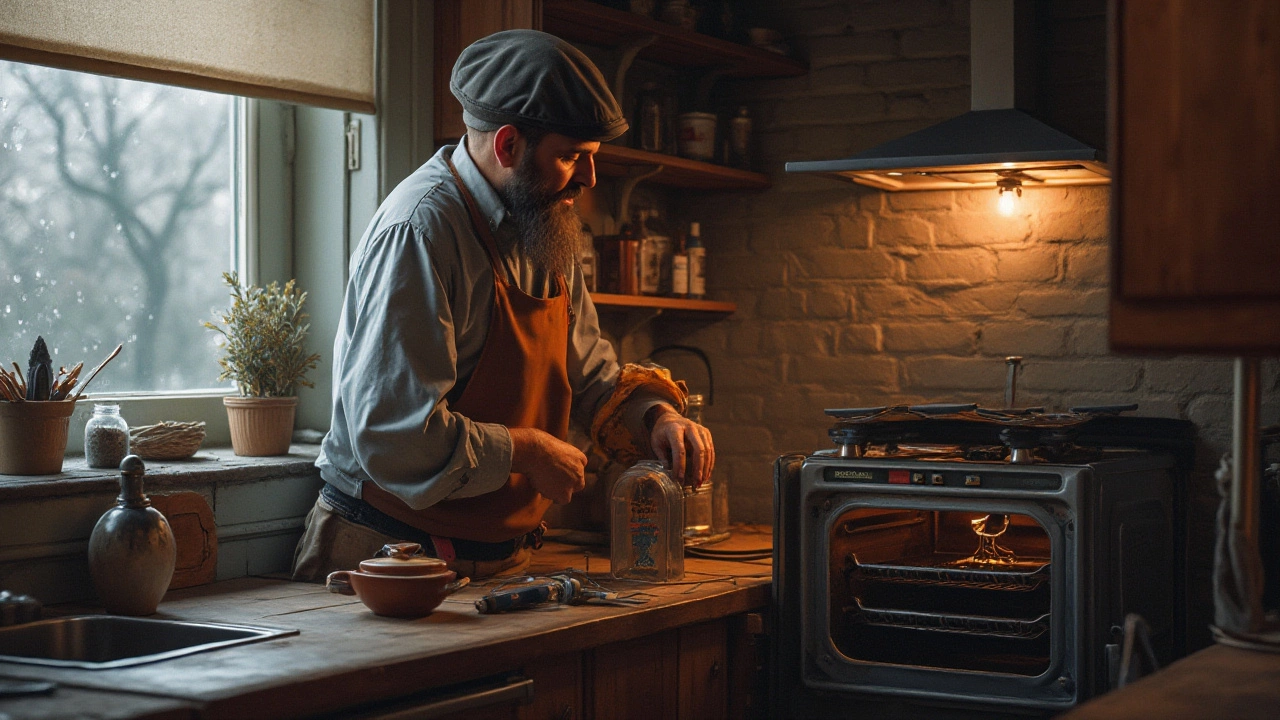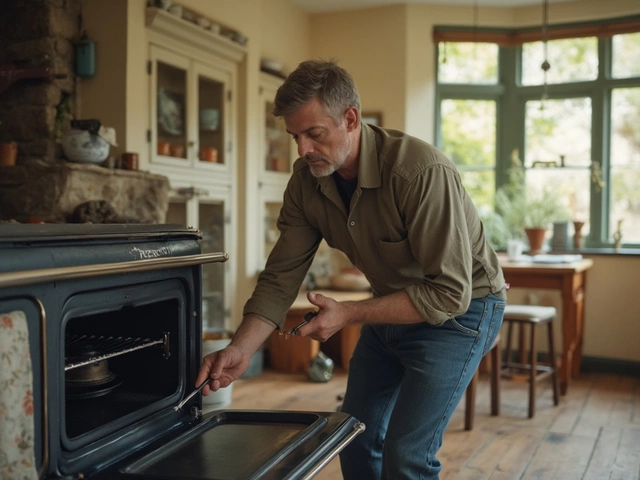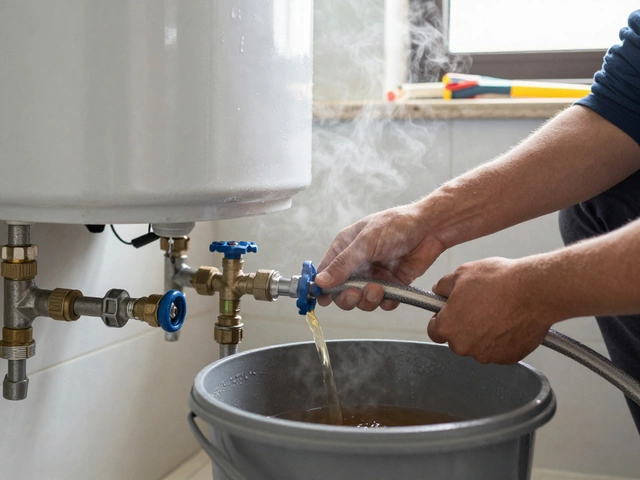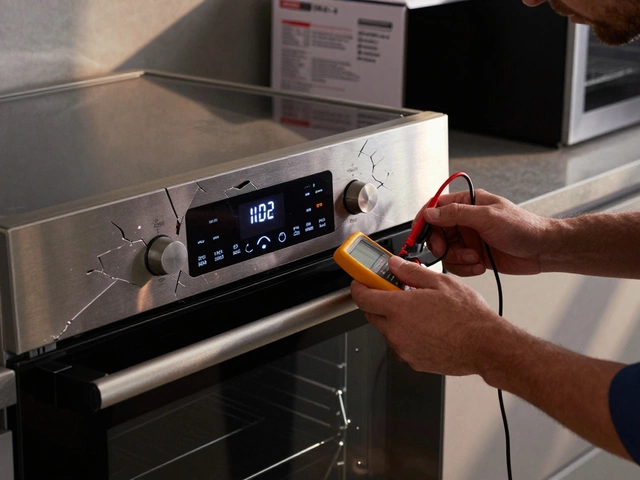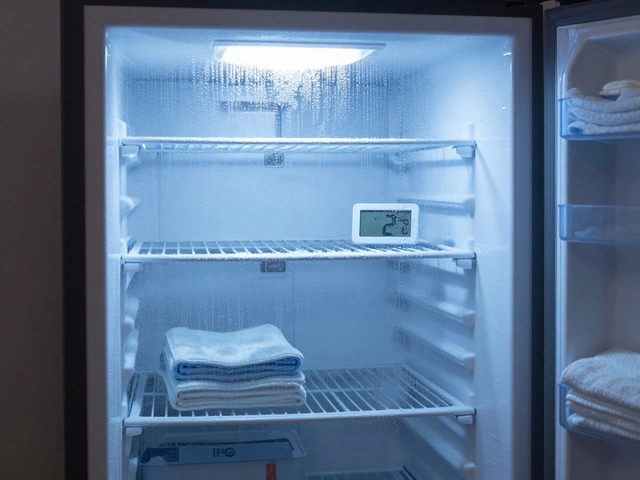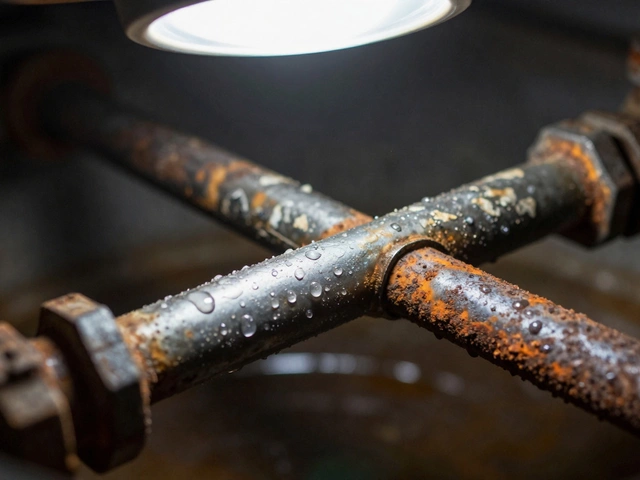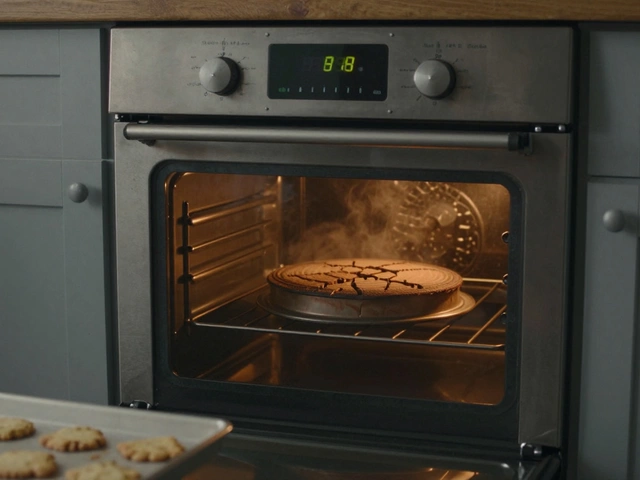Replacing an electric oven can bring a much-needed facelift to your kitchen. However, you might be wondering if such a task warrants the expertise of a professional electrician or if it's feasible as a DIY project. The answer isn't black and white, as several factors come into play, each depending on your particular situation.
While it might be tempting to roll up your sleeves and tackle the replacement yourself, understanding the electrical connections involved is crucial. Electric ovens demand a specific type of connection to function correctly, and mishandling these can lead to serious risks. Staying compliant with safety regulations is also paramount, as overlooking this aspect can have consequences more costly than hiring a professional.
In this article, we delve into the nitty-gritty of electric oven replacements, helping you discern when to call in an electrician and when a DIY approach might be suitable. We'll also share some practical tips that can make the process smoother for those determined to handle things independently.
- Understanding Electrical Connections
- Safety Regulations and Risks
- When to Call a Professional
- DIY Tips for Appliance Enthusiasts
Understanding Electrical Connections
Replacing your electric oven might seem straightforward, yet the intricacies of electrical connections often present challenges for the uninitiated. Let's break it down in a digestible manner. Most electric ovens operate on a power supply ranging from 220 to 240 volts. Unlike other home appliances, they cannot simply be plugged into a regular wall socket. This difference in voltage means they usually require a dedicated circuit, which reduces the risk of overloading your home's electrical system. Overloading can lead to tripped breakers or worse, electrical fires, none of which you want in your home.
Professional electricians typically adhere to the National Electrical Code (NEC) or similar standards applicable in your country. Compliance with these codes ensures that safety is prioritized and minimizes risk. For instance, wiring often varies based on the model of the oven. An older model might feature a three-prong connection, while newer models often have four prongs. Messing up these connections can result in ineffective grounding, increasing the odds of dangerous electrical shock. "Electricity is both a convenient servant and a potent threat," warns the Electrical Safety Foundation International. Understanding the complexity and potential dangers that lie below the surface can often convince even the bravest DIY enthusiast to consider professional help.
Your home's existing wiring could factor into this complexity, too. The compatibility between the established wiring layout and the new unit is something electricians evaluate before proceeding. They will carefully check for the correct gauge of wire, the proper length, and the correct installation of circuit breakers. In some situations, they might even recommend re-wiring or adding a fresh circuit to meet safety standards. These evaluations are crucial, as they prevent potential short circuits or overheating, thus averting possible dangers later on.
A comprehensive understanding of the electrical panel is another layer often overlooked. Many electric ovens may have unique specifications, directly impacting electrical demands. Electricians commonly inspect this aspect and assess whether your setup meets those specifications. It isn't merely about plugging in the appliance; assessing load capacity and aligning with current household usage forms a significant part of this effort. Trusting the electrician's expertise during these evaluations is wise, as it counters future complications.
For those who still feel adventurous, a list of must-haves should accompany the task itself. Basic tools like a voltage tester, circuit breaker finder, wire strippers, and an electrical tape might suffice for small adjustments but will not replace the expertise you would get from a certified professional. Most importantly, the emphasis is on safety. If at any point uncertainty creeps in, it's time to pause and reconsider seeking help. After all, dealing with electricity isn't just about making the appliance work but ensuring long-term harmony in your household's electrical ecosystem. Think of it as setting the stage for many years of cooking bliss without hidden hazards.
Safety Regulations and Risks
When it comes to replacing an electric oven, adherence to safety regulations is not just a legal obligation; it's a personal safeguard. Electricity mishaps could lead to disastrous consequences, so understanding and respecting the established safety guidelines is crucial. The main risk lies in improper handling of electrical connections, which could create hazards like electrical shocks, fires, or short circuits. Improper installation is a leading cause of home electrical fires, illustrating why professional oversight is often recommended.
The specific safety regulations can vary depending on the region, but a few universal principles apply worldwide. For instance, electric ovens typically demand a dedicated circuit. This ensures that the appliance has its own pathway to handle the load, preventing circuit overloads. Without this, using the oven could trip the circuit breaker or, in more severe cases, cause a fire hazard. The importance of this aspect cannot be overstated, as shared circuits could potentially carry excessive current, leading to overheating of wires and posing a high risk.
Professional Expertise
Having informed insights from someone who's walked the journey can be invaluable. According to John Phillipson, a seasoned electrician, "The real value of hiring a professional isn't just about compliance—it’s about peace of mind. Knowing that every wire is in its rightful place and can handle the electric load without any hiccups, that's something many overlook." This speaks volumes about why expert involvement should be considered, especially for intricate installations.
Another vital factor is the appropriate type of outlet and wiring. Improperly rated wiring can result in overheating and increased risks of malfunction. Inexperienced DIY attempts may ignore these nuances, especially when balancing wiring thickness and quality with actual power demands of the appliance. When connecting an electric oven, the wiring should comply with the necessary thickness and material quality, suitable to endure the high energy usage consistently without deteriorating or presenting risks.
Legal Compliance
Needing an electrician is often more than a suggestion—it's a mandatory legal compliance in many parts of the world. Failure to meet these regulations could result in not just safety risks but also legal intervention. For instance, any new installation, particularly in an upgrade, may require an electrical permit, ensuring compliance with local building standards. This isn’t solely bureaucracy—it's an enhancement of a household's safety net. Some insurance policies may even become void if electrical installations do not meet the set codes, making professional installation a matter of financial prudence as well.
In some areas, regular inspections for installations are part of maintaining a household's safety standards. Having a record of professional installation not only streamlines these inspections but often results in a smoother review process, reassuring homeowners that their compliance and safety are on point. Keeping in line with these regulations is part and parcel of responsible homeownership, ensuring that both the structure and inhabitants are well protected.
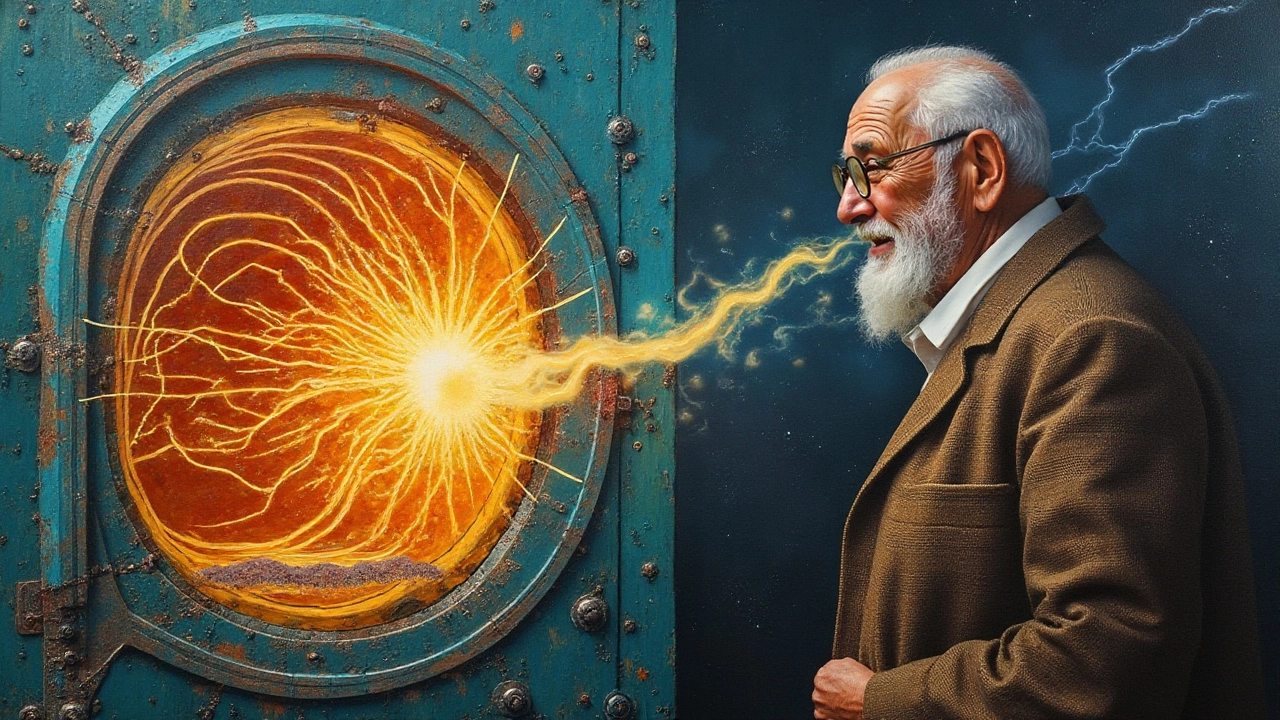
When to Call a Professional
Replacing an electric oven isn't always straightforward, and it's crucial to recognize the situations that necessitate the expertise of a professional electrician. If your current oven is hardwired into the electrical system, handling it improperly can result in electrical hazards, including shocks and fire risks. This complexity often requires the trained eyes and hands of a certified electrician, who can safely disconnect the existing setup and install a new one.
Appliance repairs and installations often intersect with building codes and safety regulations. Professionals are well-versed in these rules, ensuring your installation complies with the necessary standards. Hiring an electrician not only mitigates the risk of legal troubles but also ensures your home insurance remains valid. Insurance companies can deny claims related to electrical fires if found that the work was done inadequately or without a certified professional.
If you're transitioning from a gas oven to an electric one, the expertise of a professional is invaluable. Such changes usually require electrical upgrades, like altering the breaker capacity or adding a dedicated circuit, which are beyond the scope of untrained individuals. A professional will evaluate your electrical panel's capacity and adjust it as necessary, ensuring your new oven operates efficiently without overloading your system.
Consider the physical weight and size of the oven. Installing these appliances can be a daunting task without the proper tools and assistance. Electricians come equipped with specialized tools and techniques to maneuver heavy appliances into place, minimizing the chances of injury or damage to your kitchen cabinetry and flooring.
Another instance when a professional is indispensable is when your existing wiring shows signs of wear, such as fraying or scorching. A qualified electrician can replace old wiring, ensuring it's robust enough to support a modern oven's power requirements. Ignoring these issues can lead to unreliable oven performance and shortcuts in safety, potentially escalating to severe damage or accidents.
"An old adage in the world of home improvement is: 'If you think it's expensive hiring a professional, wait until you hire an amateur,'" says Leslie Segrete, a home improvement expert. This highlights the long-term financial wisdom of opting for professional services when necessary.
Enlisting a professional is also advisable when your schedule doesn't allow you the time and energy to tackle the project safely and thoroughly yourself. Rest assured, an electrician is trained to complete the job efficiently, often wrapping up in less time than it would take an untrained individual.
In cases where high energy consumption appliances are involved, such as an electric oven, even the energy codes may come into play. These professionals not only help install the appliance but also advise on optimizing energy use, potentially leading to lower utility bills. In the end, while the inherent cost of hiring an electrician might seem like a hefty investment, it often pays off manifold in safety, efficiency, and peace of mind.
DIY Tips for Appliance Enthusiasts
If you're an appliance enthusiast eager to embark on a new project, replacing an electric oven might seem like an exciting challenge. However, before getting started, it's essential to recognize the complexity involved in working with electrical connections. Electric ovens are not simply plug-and-play devices. They require a dedicated circuit to ensure not only their performance but also the safety of your home.
The first step in any DIY appliance replacement is ensuring you have the right tools for the job. Before jumping into the installation, you need to turn off power to the kitchen area at the main circuit breaker. This is crucial, as dealing with live wires can pose serious hazards. Gather tools such as a screwdriver set, wire strippers, and voltage tester. Each tool plays a pivotal role in safely executing the task.
Understanding Your Home's Electrical System
Understanding your home's electrical system is key to a successful oven replacement. Electric ovens typically require a 240-volt circuit. If your kitchen is set up for gas, or if the old oven's circuit does not match the new one, you'll need to adjust the wiring accordingly. Consulting the oven's manual for specific electrical requirements is always advised. The manual often provides diagrams showing how the oven should be wired, which can be incredibly useful.
"Installing or replacing electrical appliances is not necessarily reserved for the professionals. With the right guidance, many homeowners find they can manage on their own." — Home DIY Magazine
Inspection of the existing circuit is a necessary step to ensure that it can handle the load of the new electric oven. If your circuit is outdated, or if you're unsure, calling an electrician for a preliminary assessment is a wise decision. It's always better to be safe than sorry.
Step-by-Step Installation Guide
- Ensure the power is completely turned off at the main breaker to avoid any electrical shock.
- Remove the old oven, carefully detaching it from the wall. Be sure to have assistance if the oven is too heavy to manage alone.
- Inspect the existing wiring for fraying or damage. Use a voltage tester to double-check that no current is flowing.
- Carefully connect the new oven's wires to the existing wiring, referring to the manual's diagram to confirm accuracy.
- Secure the new oven into place and test that it's level. A skewed oven can impact cooking performance and safety.
- Turn the power back on and test the oven's operation to ensure everything is functioning as it should.
When working with electrical installations like oven replacement, remember that patience is your ally. Rushing the process can lead to missed steps or overlooked safety checks. Don’t hesitate to seek advice from online forums or user guides specific to your oven model. Fellow DIYers often have valuable insights that can make the process smoother.
| Estimated Cost | Tools Needed |
|---|---|
| Approximately $30-$100 | Screwdriver set, wire strippers, voltage tester |
While taking on such projects can offer a sense of accomplishment, never hesitate to reach out to a professional if you're unsure or encounter an unexpected issue. Safety isn't something to leave to chance!

